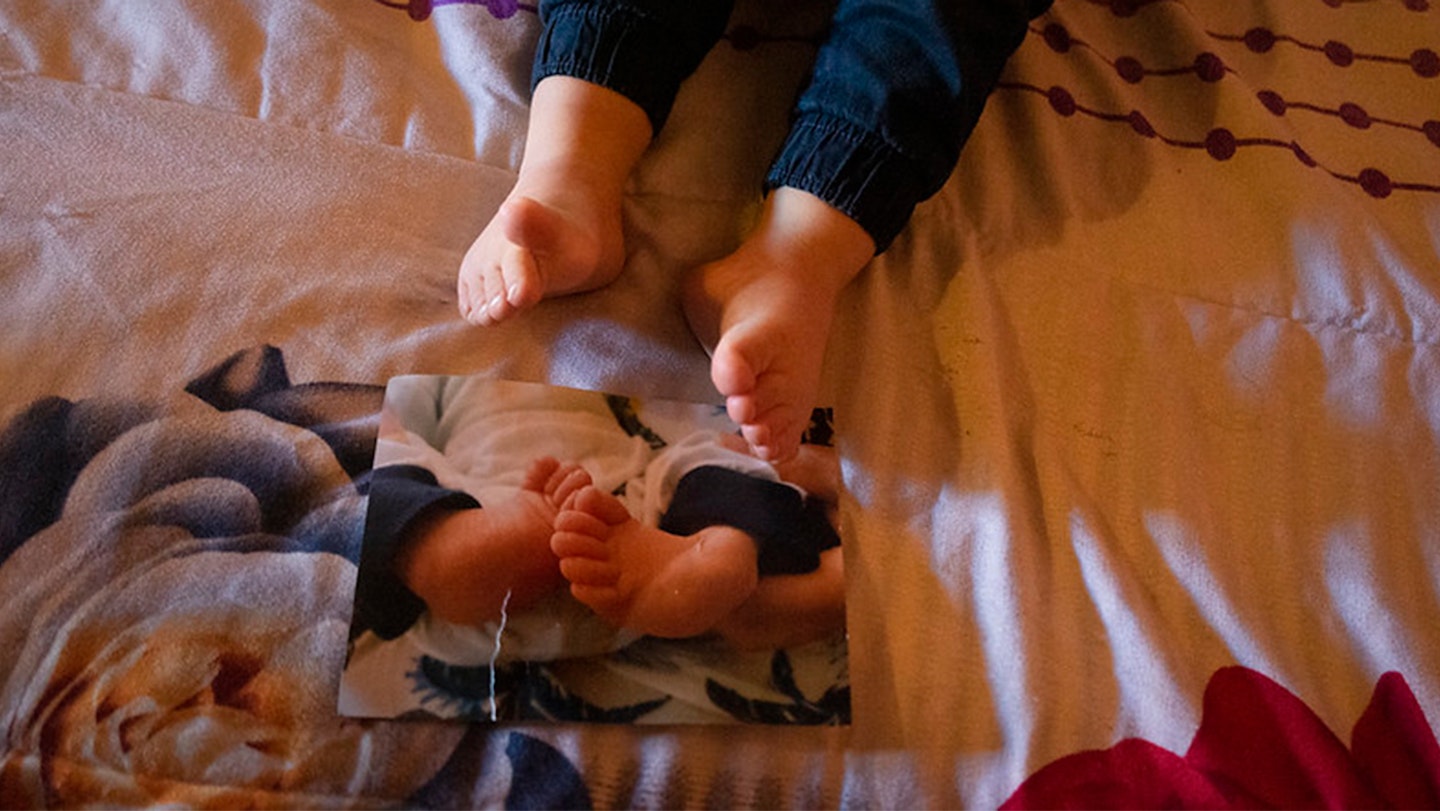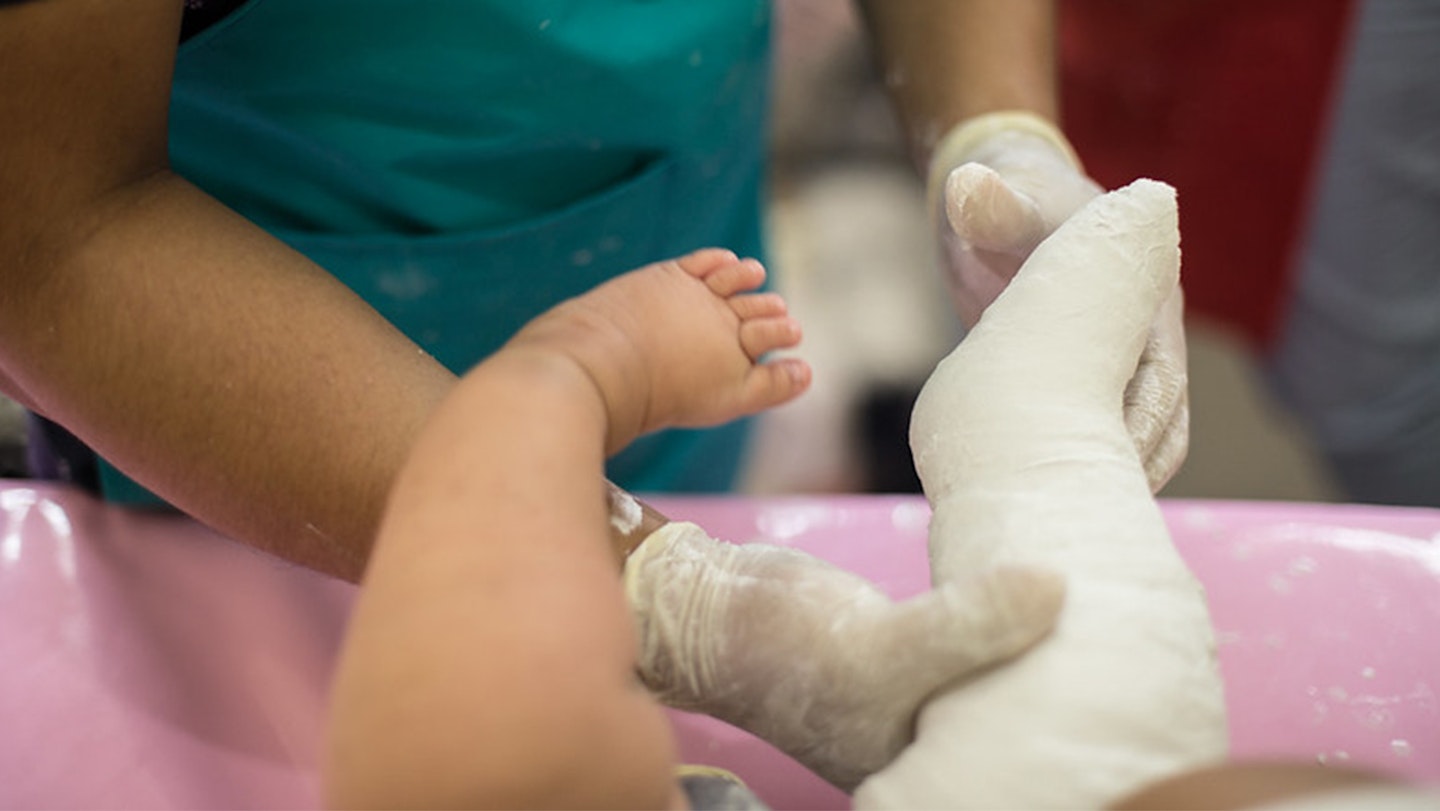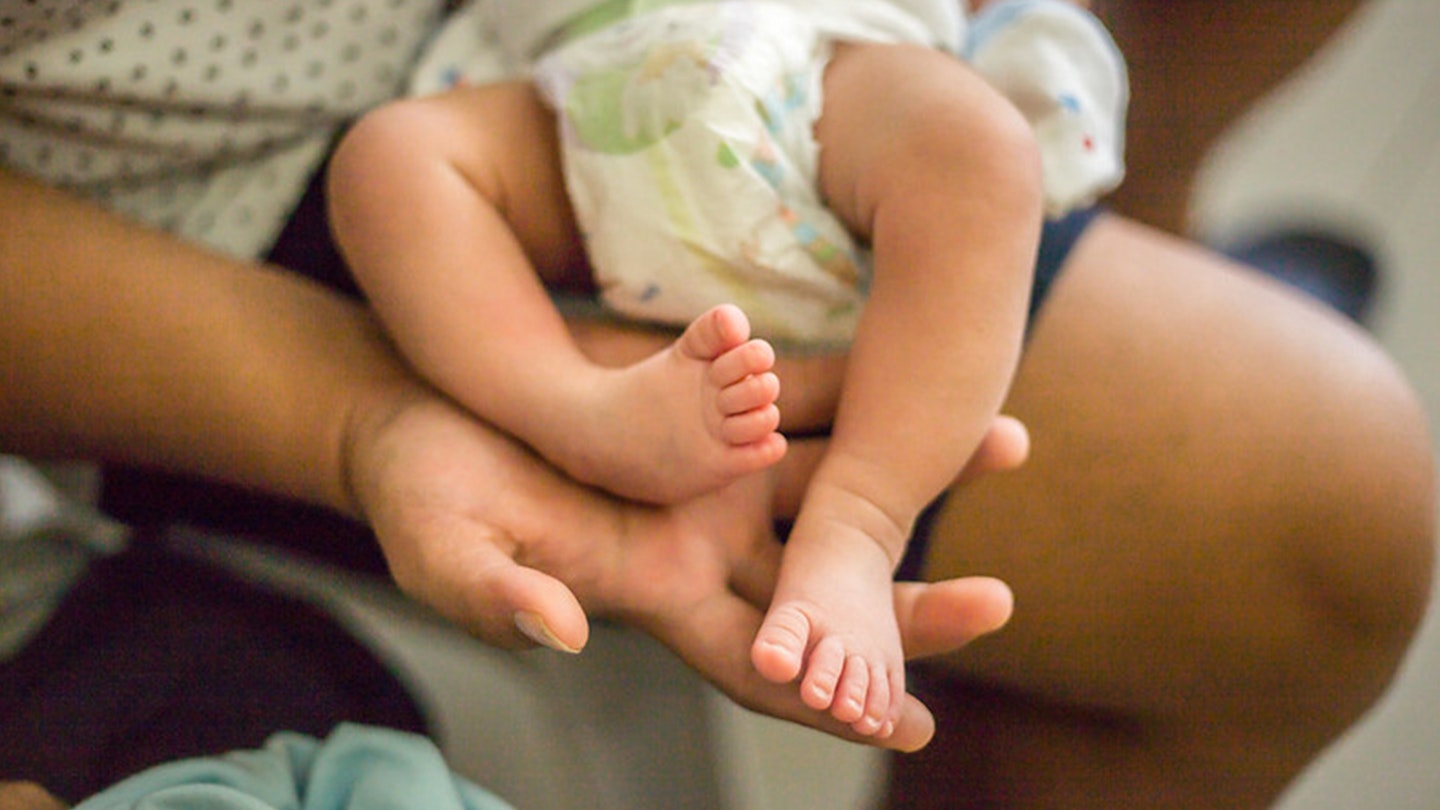It may be something you've never heard of but the condition clubfoot affects about 200,000 babies every year.
Chesca Colloredo**-**Mansfeld, CEO and co-founder of MiracleFeet, the leading global children’s nonprofit on a mission to eliminate untreated clubfoot, explains more about clubfoot and how it can affect babies.
What is clubfoot?
Clubfoot, also known as talipes equinovarus, is a congenital birth defect resulting from abnormal development of the muscles, tendons, and bones of the foot. Clubfoot affects 1 in every 600[i] to 800[ii] newborns.
Clubfoot symptoms
Twice as common in boys as girls, the condition causes one or both feet to turn inwards and upwards making it difficult and painful to walk.
Clubfoot can range from mild to severe, but the same general appearance is consistent throughout all cases. Over 90 per cent of cases occur in babies who are otherwise healthy—the position of their feet being their only medical barrier to an excellent quality of life.
What causes clubfoot to develop?
Clubfoot has been documented for thousands of years with some variation across countries and ethnic groups and an increased incidence in children born to a parent with clubfoot. While the exact causes are largely unknown, research indicates that genetic factors may play a role in 25 per cent of cases.
Despite the high occurrence of clubfoot, people in the UK are still largely unfamiliar with the condition as it is routinely treated at birth in countries with advanced healthcare systems.

Is clubfoot a disability?
Although clubfoot is categorised as a disability, more than 95 per cent of children who receive treatment early will lead active, healthy lives with minimal if any lasting effects.
Recently, British Open golfer Jon Rahm, Love Island Star Hugo Hammond, and medal-winning Paralympians Jonathan Broom-Edwards, Fin Graham, and Laura Sugar have put clubfoot into the spotlight after openly discussing their personal experiences with the condition.
If you are thinking “I’ve never seen anyone with clubfoot” that’s because it is treatable. If you live in the UK or a country with advanced medical care, the odds are that your child will receive treatment starting at birth and experience no significant impairment.
How is clubfoot treated?
The preferred treatment, known as the Ponseti method, involves casting for 6-8 weeks to gently reposition the foot or feet, followed by a simple procedure that releases the Achilles tendon. Once the feet are fully corrected, a foot abduction brace is worn only to prevent relapse—for 23 hours a day for the first three months, then only when sleeping for up to five years. (Many people think that the brace is used to reposition the feet, but this is not true – it is only worn once the feet have been corrected.) A medical professional will advise on the exact amount of time a brace should be worn.
Numerous studies, including MiracleFeet’s own data, show consistent bracing is the most likely factor determining long-term success. It is important that families are committed to applying the braces properly to prevent relapse.
Regardless of the severity of a child’s clubfoot, the condition will not improve without treatment— which should ideally begin within weeks of birth when the tendons and ligaments are at their most elastic. The goal of treatment is to ensure the child has a fully functioning foot and can stand and walk with the sole of their foot flat on the ground. Ultimately, treatment provides pain-free mobility.

If left untreated, what complications can clubfoot cause?
Without early intervention, as a child with clubfoot begins to walk, they bear weight on the side of the foot which causes further twisting and discomfort and can increase the likelihood of the need for surgery--a considerably more invasive and complex treatment than the Ponseti method.
However, in healthcare systems like the UK, early diagnosis means children will be treated immediately, significantly reducing their chances of experiencing long term mobility issues.
Today 90 per cent of children with clubfoot are born in lower-income countries where few can access proper care. Without treatment, these children will likely experience severe disability, mobility issues, chronic pain, an inability to wear normal shoes, and skin problems.
Despite being among the most common birth defects, clubfoot has been largely overlooked as a global health and development priority, and there is no World Health Organisation backed strategy for helping those born with this treatable disability. As a result, many children born with clubfoot face social stigma and political exclusion; are more likely to experience poverty, neglect, and abuse; and lack access to education, work, and healthcare.
MiracleFeet is on a mission to eliminate untreated clubfoot by ensuring every child has an opportunity to receive this early intervention so they can thrive.
[i] Mai, C. T. et al. (2019). National population-based estimates for major birth defects, 2010-2014. Birth Defects Research, 111(18).
[ii]Owen, R. M., Capper, B., & Lavy, C. (2018). Clubfoot treatment in 2015: a global perspective. BMJ Global Health, 3(4). doi:10.1136/bmjgh-2018-000852
